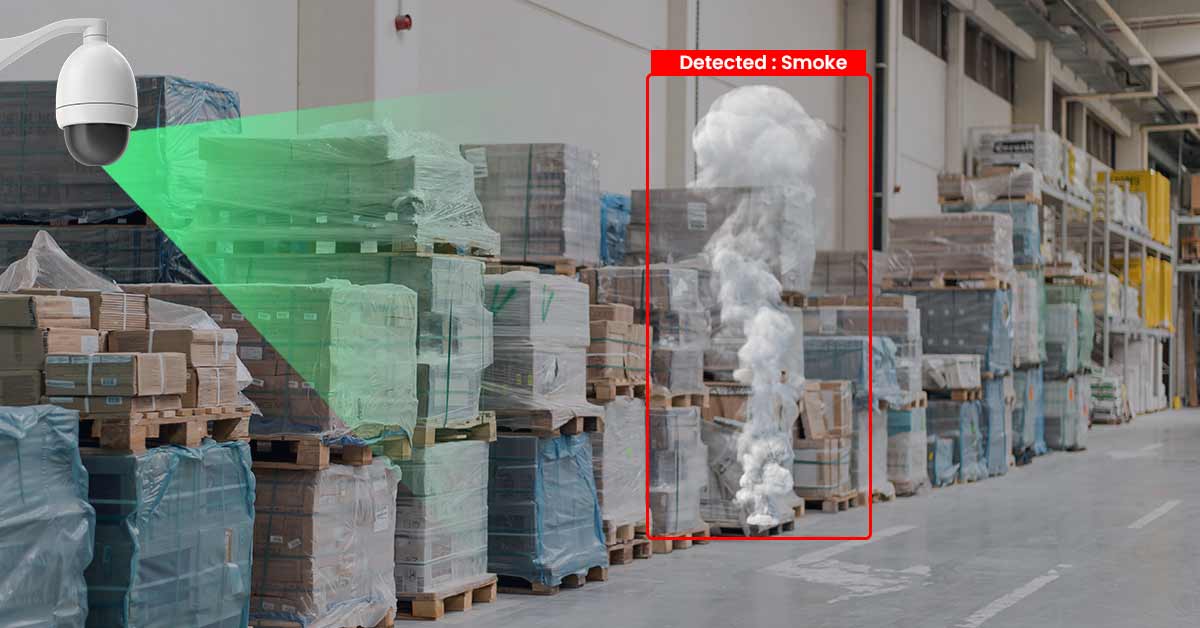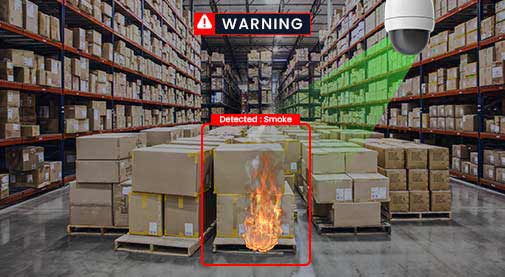
Smoke detection is essential to fire safety systems, as smoke is often the first sign of a fire. Smoke detectors work by sensing the presence of smoke particles in the air and sounding an alarm to alert people to the danger. However, traditional smoke detectors cannot detect smoke promptly, especially in environments with high ceilings or large open spaces.
This is where deep learning-based fire and smoke detection systems come into play. By leveraging advanced neural network algorithms, deep learning systems can process large amounts of data from sensors and cameras to detect the presence of smoke more quickly and accurately than traditional smoke detectors. These systems can also adapt to changing environments and adjust their sensitivity levels accordingly.
What is Deep Learning?
Artificial intelligence (AI) that employs algorithms to learn from data is known as deep learning. It is a part of machine learning, a field of artificial intelligence that concentrates on creating computer programs that can learn from data without being explicitly taught. Deep learning algorithms can learn from vast volumes of data and can be used to find patterns in data that are hard for conventional approaches to pick up on. Numerous applications, such as image identification, natural language processing, and smoke detection, have used deep learning.
Deep learning-based fire and smoke detection systems are particularly effective in detecting fire and smoke in complex environments where traditional smoke detectors may struggle, such as areas with high airflow or ceilings. They can also distinguish between different types of smoke, such as cooking smoke versus smoke from a fire, reducing false alarms and improving the accuracy of fire detection.
How Effective Is Deep Learning in Smoke Detection?

Algorithms are used by deep learning-based fire and smoke detection systems to find smoke in the surrounding area. Large data-sets of photos depicting smoke-filled and non-smoking situations are used to train the algorithms. The algorithms can then use the photos to analyze the smoke in real time. The algorithms are quicker and more accurate at detecting smoke than conventional smoke detectors.
The fire and smoke detection systems based on deep learning can detect smoke in indoor and outdoor settings. The devices can also identify smoke from many sources, including cigarette smoke, wood smoke, and other sources of smoke. The devices can detect smoke in various environmental situations, such as dim lighting and high humidity.
Teksun Inc. introduced Teksun Telep Fire & fire and smoke detectionAI Model, a specialized software program designed to identify early fire signs through smoke detection. This AI model has been custom-built specifically to detect smoke and trigger preventative actions to reduce the likelihood of a fire.
The AI model works by analyzing visual data captured by cameras and using advanced algorithms to identify patterns that indicate the presence of smoke or flames. Once the model detects smoke or fire, it can issue an alarm to alert individuals in the area, trigger sprinkler systems or other fire suppression mechanisms, or send notifications to emergency services.
By providing early warning of potential fires, the Teksun Telep Fire & fire and smoke detection AI Model can help prevent or minimize the damage caused by fires, protecting both property and people.
Benefits of Deep Learning-Based Smoke Detection:
Deep learning-based fire and smoke detection systems offer numerous benefits over traditional smoke detectors, including faster and more accurate detection, greater adaptability, improved safety, reduced maintenance, and cost-effectiveness. As the technology continues to evolve, we expect to see more widespread adoption of deep learning-based fire and smoke detection systems in various settings, from homes and businesses to industrial facilities and public spaces.
1. Faster detection: Deep learning-based fire and smoke detection systems can detect the presence of smoke more quickly than traditional smoke detectors, reducing response times in emergencies.
2. Greater accuracy: Deep learning algorithms can distinguish between different types of smoke and reduce false alarms, improving the accuracy of fire detection.
3. Adaptability: Deep learning-based fire and smoke detection systems can adapt to changing environments and adjust their sensitivity levels accordingly, reducing the risk of false alarms.
4. Real-time monitoring: Deep learning algorithms can process large amounts of data in real-time, allowing for continuous monitoring of smoke levels and immediate alerts in an emergency.
5. Improved safety: By detecting smoke more quickly and accurately, deep learning-based fire and smoke detection systems can help prevent or minimize damage to property and save lives.
6. Reduced maintenance: Deep learning-based fire and smoke detection systems require less maintenance than traditional smoke detectors, as they do not need to be calibrated or replaced as frequently.
7. Cost-effectiveness: Deep learning-based fire and smoke detection systems can be more cost-effective than traditional smoke detectors, as they require fewer sensors and can be integrated with existing security systems.
8. Remote monitoring: Deep learning-based fire and smoke detection systems can be remotely monitored and controlled, allowing greater flexibility and ease of use.
9. Increased scalability: Deep learning-based fire and smoke detection systems can be easily scaled up or down to accommodate different environments and changing needs.
10. Integration with other systems: Deep learning-based fire and smoke detection systems can be integrated with other safety and security systems, such as fire suppression systems and security cameras, to provide a comprehensive safety solution.
Wrapping Up
The development of numerous innovative and more effective methods of detecting smokes in buildings has been made possible by modern technology. It is significant to emphasize that early fire and smoke detection technologies do not replace current detection and response procedures. Instead, the system serves as an early warning system, identifying potential ignition points throughout the complex.
Teksun Telep Fire & fire and smoke detectionAI Model is an effective safety measure that can help safeguard lives, property, and financial assets. A fire and fire and smoke detection system can be useful in various industries, including Oil & Gas refineries, Warehouses, Shopping malls, Exhibition centers, Production facilities, Mining Industries, and Construction & Manufacturing.


